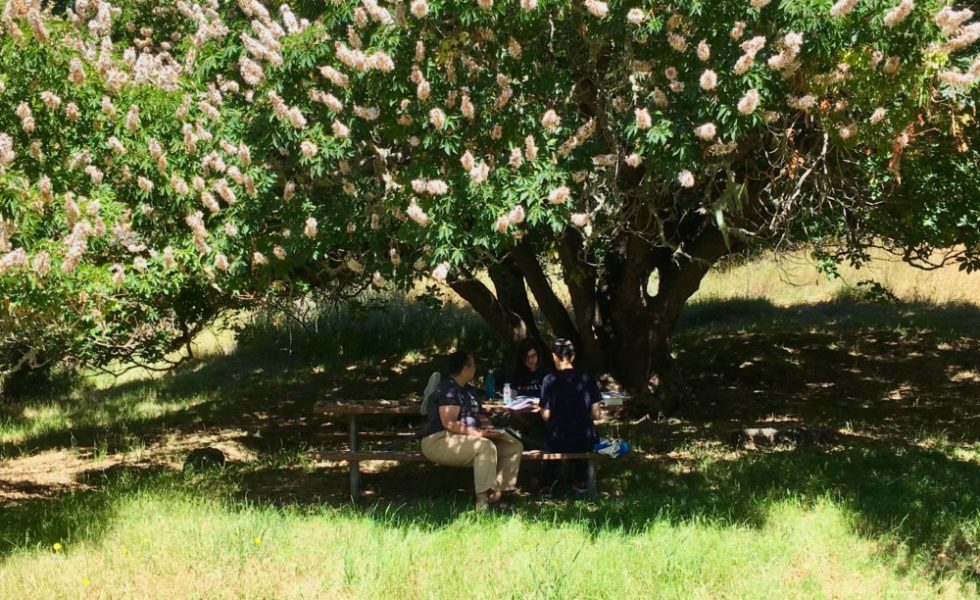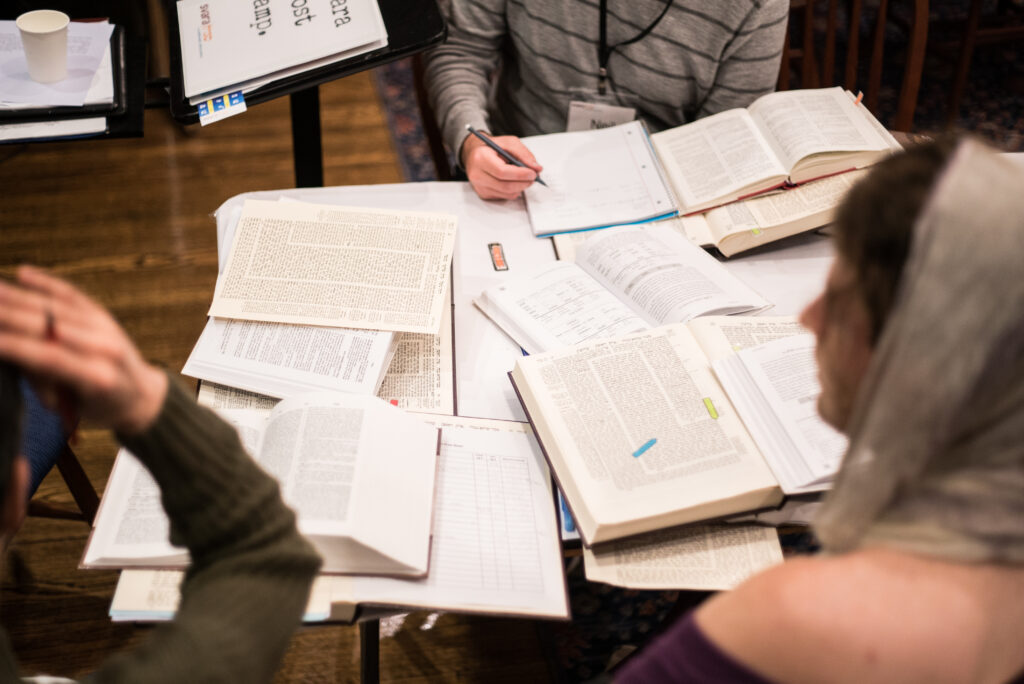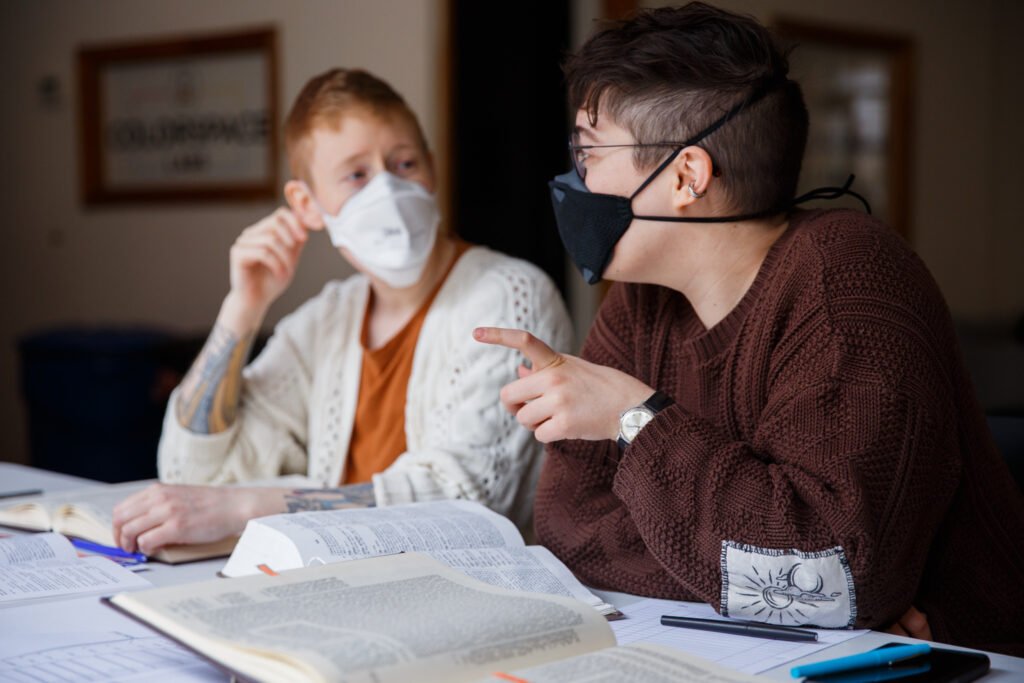When I play piano, nothing feels more grounding than playing classical music. I imagine it has something to do with reading sheet music, where the notes and the instructions of how to play always stay the same. The notes on the page create a solid and stable container for me to breathe life into, to bring out my emotions, learnings, and subtleties of the moment. For me, the beauty of this music is that, although the notes don’t change, the piece comes out differently every time. I never play a song the same way twice.
When I learn a new song on piano, I piece together the notes, the fingering, the rhythm, and the pace. I listen to determine if my playing reflects my intention. I make playlists of the same song played by many different people to get ideas. While all the notes and rhythms are more or less the same for any given song, the nuance people bring to it seems to create different shapes, tell different stories, and share different interpretations (or rebellions) from the same basic instructions. I know that a song is “mine” when, despite its sameness, I like the way I play it the most.
I feel engaged in the same process when we translate texts at SVARA. First, we meet a word “inside”, then “outside.” An inside translation attempts to account for every single letter of the word, making distinctions between each individual piece. This includes the meaning of the root of the word and where it comes from, and how the prefixes, suffixes, and infixes are woven together to create that word. There are choices to be made and interpretations to uncover, but this phase is mostly about communicating the bare mechanics of the words we’re learning and trying to access all the possibilities for a given word. We know a translation is “inside” when it resists the temptation to add language that isn’t directly represented in the letters of the word. Even connective words like “if” or “is” stay out of this phase.
From there, we craft our “outside” translation. We string our words together into a translation that flows, one which sounds like something we’d actually say in the way we’d actually say it. We make choices about which definitions we want to use, considering the many possibilities each word holds. We fill in the blanks between the words, choosing our “ifs” “ands” and “buts” to make the sentence come to life. We add explanations for what phrases mean, craft words to paint a picture of what’s happening, and explain the context and significance of what’s going on in our text.
Going from “inside” to “outside” is one of the most difficult skills in the bet midrash. It’s a moment of deep vulnerability. After putting everything on the table with our inside translations, our outside translation shows the choices we’ve made. It reveals our innermost ideas about the sugya (passage of Talmud) as a whole, what the Talmud is trying to say, and what we think matters. We bring color as we string words together, and we apply tone of voice to the text. The outside translation of a sugya is going to look and sound different for each person. Like different pianists approaching sheet music, we each breathe our unique voice into the text as we interpret what the words mean and how they interact. Our fellow SVARA-niks get a glimpse of our inner workings – how we think and how we put things together.
Whenever we talk about “inside” and “outside,” I always think about a story about Rabban Gamliel, the nasi or head of the Sanhedrin (Rabbinic Court). In the days when Rabban Gamliel was the nasi, he had guards at the doors of the bet midrash who had very specific instructions about who to let in:
כׇּל תַּלְמִיד שֶׁאֵין תּוֹכוֹ כְּבָרוֹ, לֹא יִכָּנֵס לְבֵית הַמִּדְרָשׁ
Every learner whose insides are not like their outsides, they would not enter the bet midrash .
Let’s zoom in on this requirement set by Rabban Gamliel: that learners’ insides matched their outsides. What does that mean? Some interpret this phrase to mean someone who postures to the outside world, but whose insides aren’t genuine. And on the flip side, one can interpret it to mean that our inner thoughts and beliefs are exemplified in our actions.
But still: what?! How could someone possibly verify something like that? It’s hard to imagine such a specific and constraining prerequisite for entering the bet midrash. And even if we could decipher this in a person, there are a lot of structures in society that make it nearly impossible for our insides to match our outsides. As a queer person, I can’t help but think about the moments in which my outsides didn’t match my insides in order to get access to places. I know that sometimes matching my inside self to my outside self is not about truth and integrity, and sometimes it’s not even about bravery, but instead it’s a matter of artistic translation, self-reflection, and discovery. What do I call myself if I’m not sure the word exists?
For Rabban Gamliel, perfectly matched insides and outsides were a non-negotiable requirement. He was quite literally gate-keeping, and the ticket to entry was adherence to an evasive and perhaps impossible standard. At SVARA, our approach is a little different. When we learn Talmud at SVARA, we are engaging in the act of turning our insides outward – not just through the mechanics of the text, but by going deep inside, drawing out, and offering up our full selves. Making our insides and outsides match requires safety, patience, care, love, and support. At SVARA we want the messiness of the journey: the space, safety, and reassurance to experiment. Our learning focuses on one question: How do I translate the language of my kishkes and the whispers of my heart into speech and argument?
Perhaps this is a critical implication of this Talmudic story. In a dramatic turn of events, Rabban Gamliel is deposed as the nasi, and the guards at the door of the study hall are removed. When this requirement is lifted, students flock to the study hall. There’s a dispute about what happened that day the guards were removed – one said that four hundred benches were added, and another said that seven hundred benches were added. It’s said of the bet midrash that day:
ולא היתה הלכה שהיתה תלויה בבית המדרש שלא פירשוה
There was no halakha (practice) that was left suspended in the beit midrash that wasn’t interpreted.
When we are able to bring our full, vulnerable selves to the text and make our outside translations shine, the very texture of our learning changes in beautiful ways. We know that owning the text in this way doesn’t happen just once – it’s a lifelong journey to make room for our inner and outer selves, and deepen our relationship with our tradition. As we continue to grow and change, and as more benches get added to our bet midrash, may we delight in our outside definitions growing richer, stronger, and deeper.







